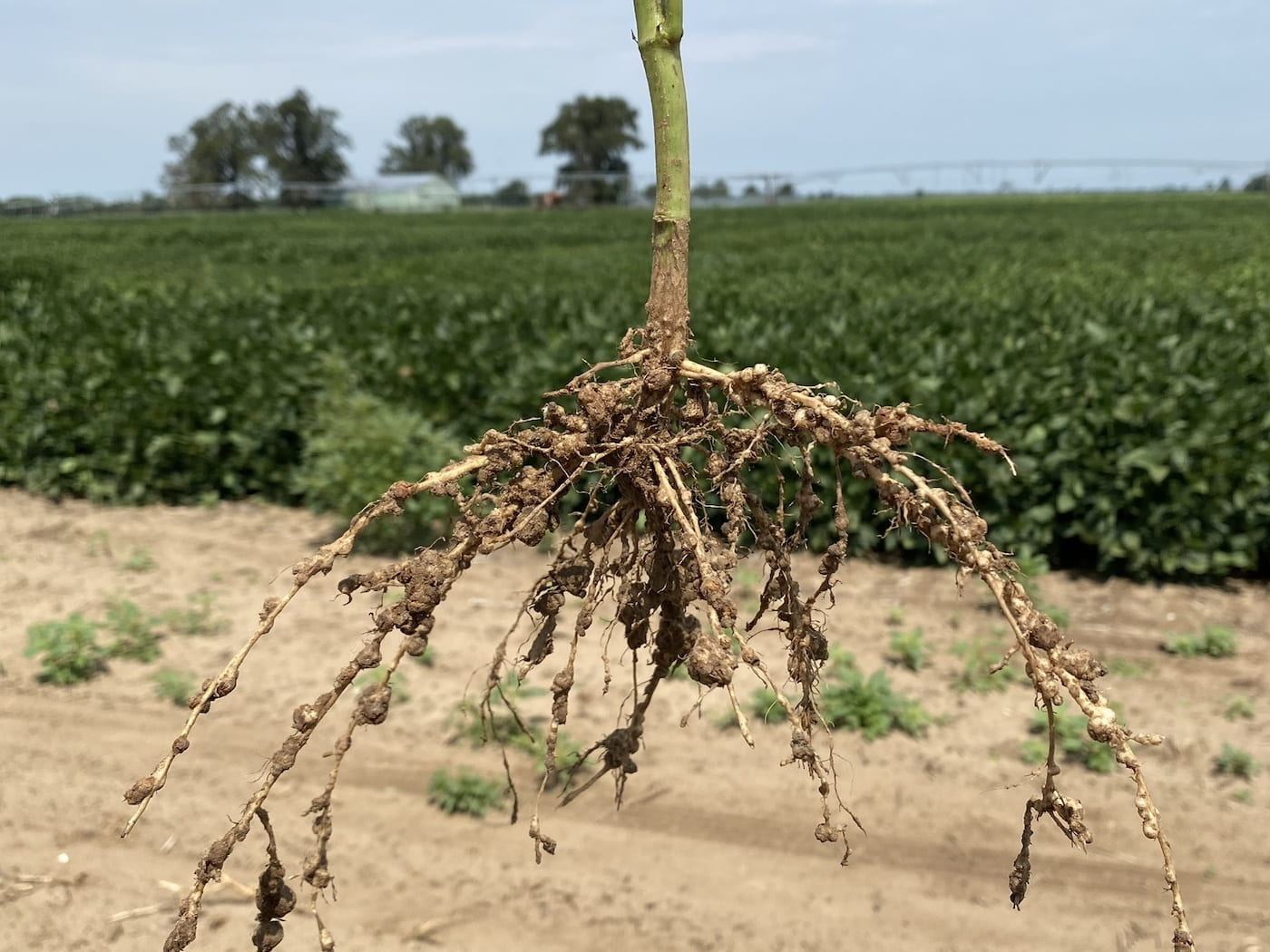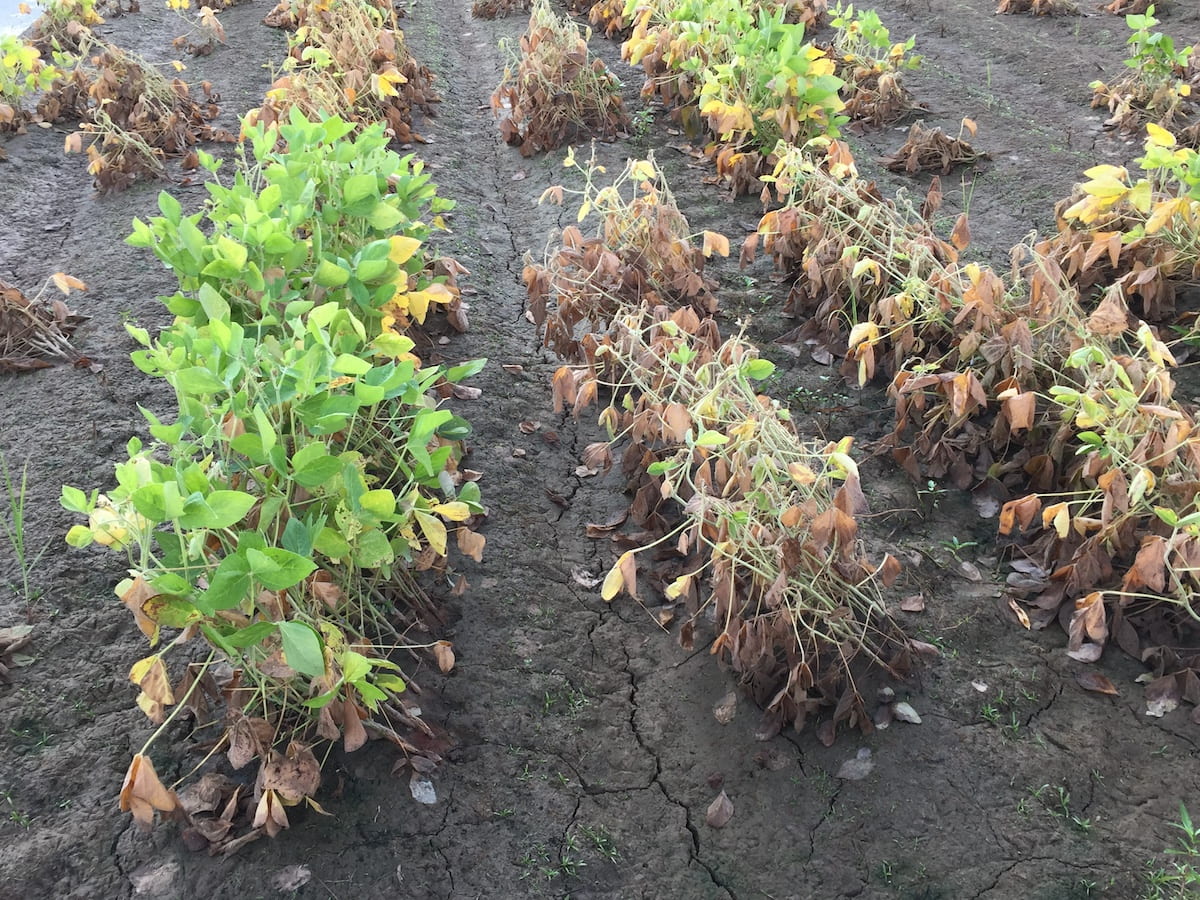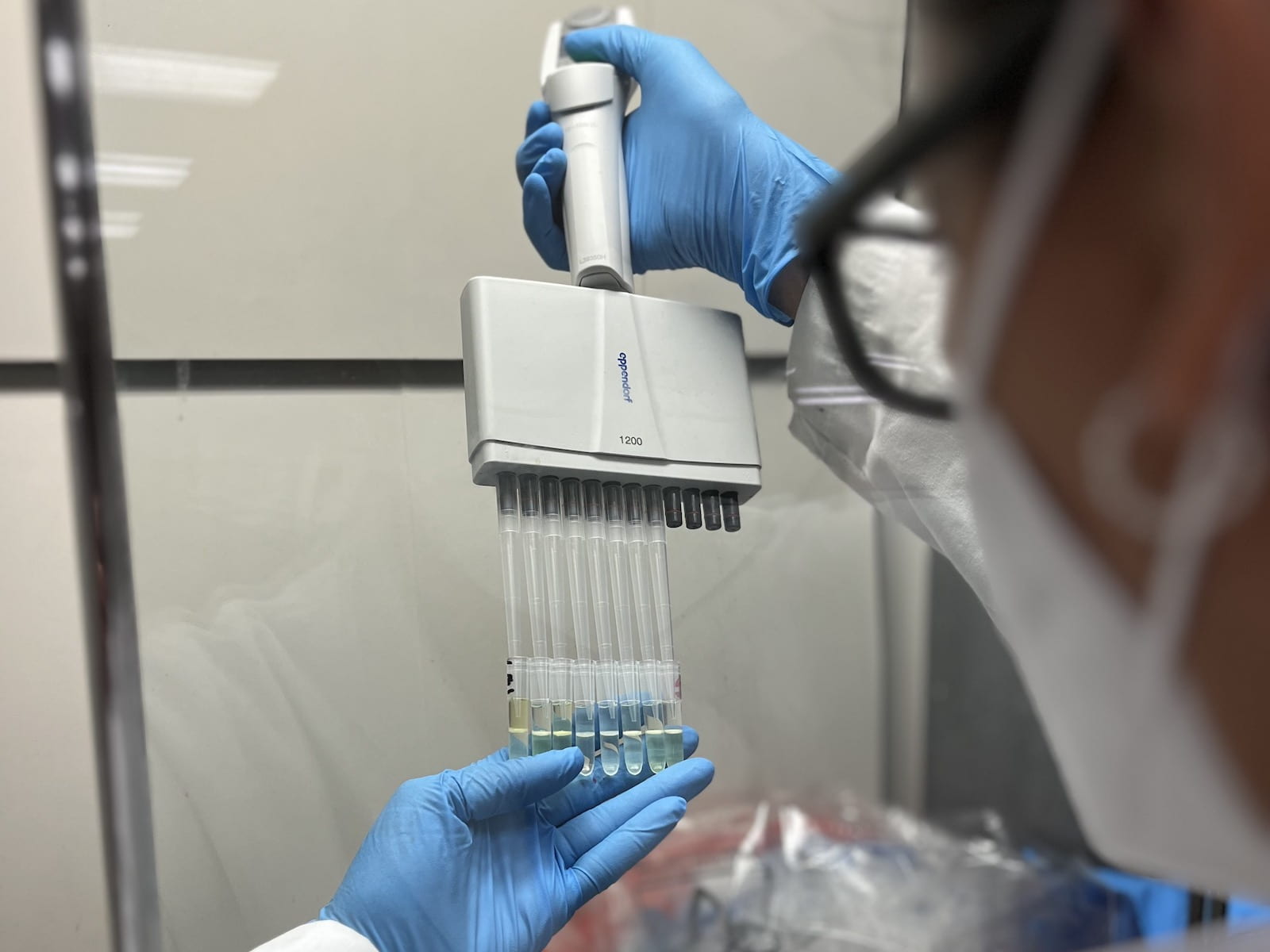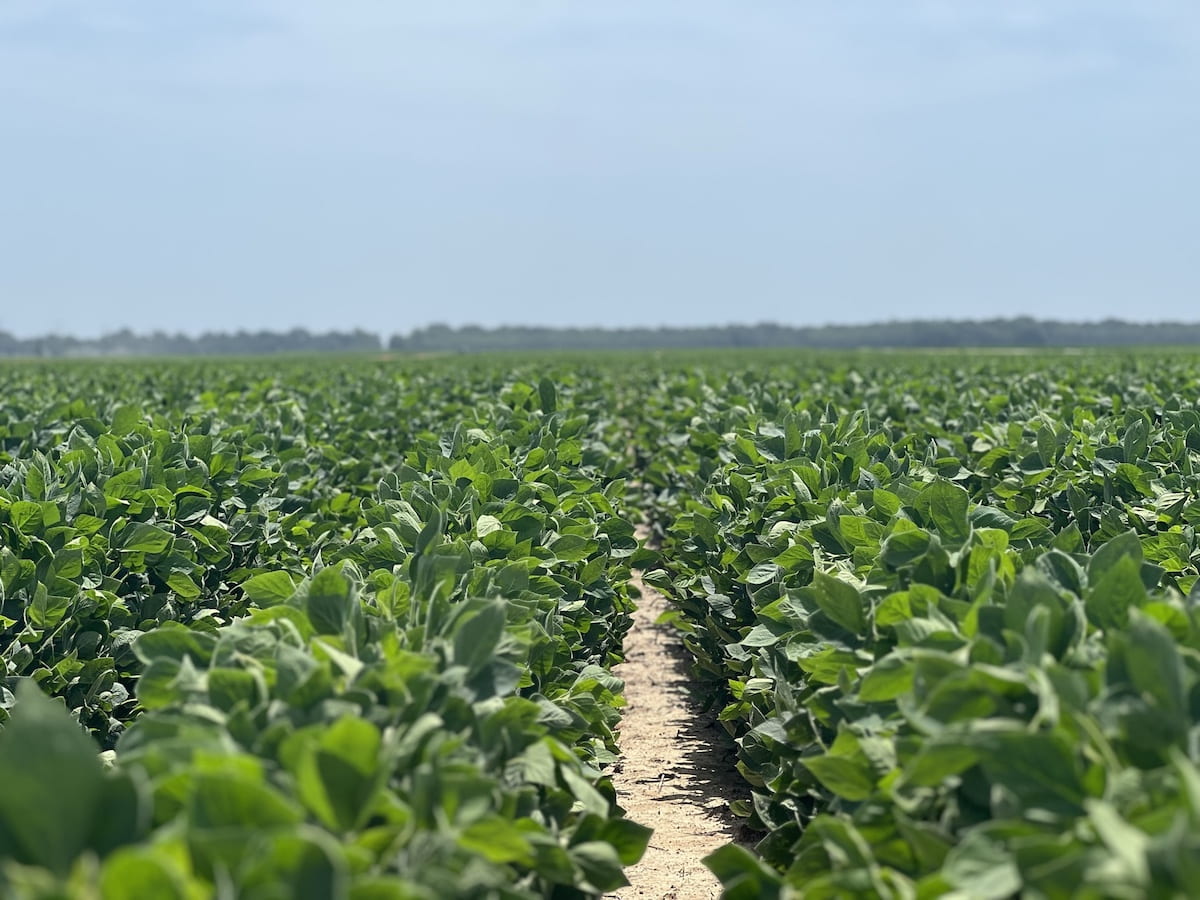Yield-limiting Stressors
Resistance to Southern Root-knot Nematode
In Arkansas, southern root-knot nematode (SRKN) is the main plant-parasitic nematode affecting soybeans, having been found in 91% of sampled counties. It causes severe yield losses reaching as high as 8.6 million bushels of soybeans each year. The University of Arkansas Soybean Breeding program is working on identifying novel genetic sources of resistance and developing MG4 and MG5 SRKN-resistant cultivars and germplasm lines adapted to Arkansas and the mid-South soybean growing region.
Active research projects:
- United Soybean Board – Expanding the Genetic Base of Southern Root-knot Nematode Resistance in Soybean
- Mid-south Soybean Board – Southern Root-Knot Nematode in Maturity Group 4 Soybean: Characterization of Resistance Mechanisms and Breeding for Resistance
- Arkansas Soybean Promotion Board – Fast-tracking MG4 and early MG5 cultivars with southern root-knot nematode resistance
- Arkansas Soybean Promotion Board – Soybean Germplasm Enhancement Using Genetic Diversity
- Arkansas Soybean Promotion Board – Development of High-yielding Soybean Cultivars with Broad Resilience to Stressors
Tolerance to Water-related Stressors
It is critical to develop soybean varieties that can withstand rough water-related conditions (drought and flood) while maintaining yield. The Soybean Breeding program conducts field evaluations of hundreds of adapted breeding lines and genetically diverse accessions under water-related stress. Genetic studies are conducted to identify genomic regions and molecular markers associated with superior tolerance to drought and flood. High-throughput phenotyping is implemented to develop statistical models that can precisely estimate the degree of symptomology in each tested genotype. This can speed up the identification of novel genetic sources of tolerance as well as the development of tolerant breeding lines. In addition, the program is also working on investigating how drought and flood stresses interact with soybean growth, yield, and seed composition.
Active research projects:
- United Soybean Board – Improving Soybean Flood Tolerance for Sustainable Production
- United Soybean Board – Yield Limitations of Soybean Varieties Under Drought: Identifying and Overcoming Weaknesses by Team Drought via Breeding, Genomics, Phenomics and Physiology
- United Soybean Board – Utilizing Genes from the Soybean Germplasm Collection to Mitigate Drought Stress – Phase II
- Mid-south Soybean Board – Screening soybean germplasm and breeding soybeans for flood tolerance
- Arkansas Soybean Promotion Board – Soybean Germplasm Enhancement Using Genetic Diversity
- Arkansas Soybean Promotion Board – Development of High-yielding Soybean Cultivars with Broad Resilience to Stressors
Tolerance to Off-target Dicamba Exposure
The development and commercialization of genetically engineered dicamba-tolerant soybean was followed by extensive reports of off-target dicamba damage to non-tolerant vegetation. Previous research developed by our team and collaborators has identified non-genetically engineered conventional soybean genotypes with higher tolerance to off-target dicamba. Genetic studies are being conducted to further understand the genetic architecture of tolerance, as well as the deployment of high-throughput phenotyping strategies to precisely differentiate the response of various genotypes. The end goal of the project is to develop conventional high-yielding soybean breeding lines with superior tolerance to off-target dicamba and broad resistance to both biotic and abiotic yield-limiting stressors. Natural tolerance to off-target dicamba may sustain and improve the production of other herbicide-tolerant soybean production systems, including the growing niche markets of organic and conventional soybean.
Active research projects:
- Mid-south Soybean Board: Screening and Selecting Non-Xtend Soybeans for Dicamba Tolerance
Breeding Methodologies
Genomic Prediction and Selection
Genomic-based prediction is an important tool that allows the prediction of phenotypic values based on molecular marker information. By implementing genomic prediction and selection in a soybean breeding program, it is possible to identify and select superior lines in the early stages even before field testing. This results in a shorter breeding cycle and maximizes genetic gains. Our team works on various aspects of genomic-based prediction models in our breeding pipeline, including the development and validation of new statistical models, logistics and quality control of genomic-based breeding, and real-world implementation toward cultivar development. Thus, this project allows the faster development of high-yielding soybean varieties adapted to Arkansas.
Active research projects:
- Arkansas Soybean Promotion Board – Genomic Prediction to Enhance the Efficiency of Soybean Breeding
- Arkansas Soybean Promotion Board – Development of High-yielding Soybean Cultivars with Broad Resilience to Stressors
- Arkansas Soybean Promotion Board – Soybean Germplasm Enhancement Using Genetic Diversity
Utilization of Off-season Nursery for Soybean Line Development
Most of our soybean cultivar development efforts had been primarily focused on conventional non-GMO cultivar development. To remedy this, we established a backcrossing program to convert elite breeding lines into Enlist-E3® products. This conversion process occurs exclusively in off-season nurseries in Puerto Rico where seven generations can turn in only three calendar years. These efforts support a steady breeding pipeline of herbicide-tolerant varieties that will be available to Arkansas growers.
Active research projects:
- Arkansas Soybean Promotion Board – Utilization of Winter Nursery for Soybean Line Development through Backcrossing
Broadening the Soybean Genetic Diversity
Soybeans have limited genetic diversity, with only a few ancestors contributing to the genes found in most varieties grown in the southern United States. Through the introduction of genetic materials from different regions and historical varieties/landraces from the USDA Soybean Germplasm Collection, the University of Arkansas Soybean Breeding program is focused on creating high-yielding varieties that are tolerant to biotic and abiotic stresses. A wider genetic base allows the development of new populations with desirable traits that will benefit Arkansas and U.S. farmers.
Active research projects:
- Arkansas Soybean Promotion Board – Development of High-yielding Soybean Cultivars with Broad Resilience to Stressors
- Arkansas Soybean Promotion Board – Soybean Germplasm Enhancement Using Genetic Diversity
Improved Seed Composition
High Protein and Oil
Soybean is often referred to as the “golden miracle bean” due to its unique seed composition and versatile uses. With a constantly growing world population and demand for not only sufficient but high-quality food, soybean rises as a crop that delivers the highest amount of protein per hectare and accounts for over 60% of total global oilseed production. Targeted genetic strategies are needed to break or modify the negative association between protein and oil and thus, maximize the value of soybean on a per-acre basis for commodity commercialization and value-added products for specialty markets. Our group works on developing new and improved soybean cultivars and germplasm with enhanced seed protein and oil content.
Food-grade Soybean Breeding
Food-grade soybeans such as large-seeded edamame and small-seeded natto are important to U.S. and Japanese soybean markets. The University of Arkansas Soybean Breeding program develops elite edamame and natto varieties adapted to U.S. environments to support the national vegetable soybean market and production. Simultaneously, the program aims to identify molecular markers associated with important traits related to edamame and natto quality to speed up the development of new varieties.

